A customer satisfaction survey is a marketing instrument used by businesses to determine clients’ level of satisfaction with a brand. This questionnaire helps companies identify dissatisfied consumers, better understand their needs, optimize products, and improve customer service.
In this article, we’ll explain why customer satisfaction surveys are so important, shed light on their types, offer some tips on how to create them, and provide several examples.
Why is a customer satisfaction survey important?
It’s impossible to evaluate a product without customer feedback objectively. First, you need to determine who your product is designed for since those you identify as your target audience will be your company’s source of the most valuable insights.
You can’t launch a new product successfully if you don’t know for sure if your customers actually need it. Similarly, you can’t optimize and improve your current product if you haven’t identified your clients’ pain points. You also can’t simply fire your customer service rep who received a few complaints and hire new staff without analyzing what they did wrong.
To reveal your weak points and understand how to optimize your product, you should implement several types of satisfaction surveys.
Types of Satisfaction Surveys
A satisfaction survey is a general name for all surveys that help obtain valuable information about your brand and analyze clients’ feedback. Try to use different types of surveys depending on what insights you want to get. Check them out below.
- Net Promoter Score (NPS). This is the most popular satisfaction survey both for customers and employees. Its goal is to find out whether customers would recommend your product or service to their friends and colleagues. Detractors (score 0-6) are dissatisfied clients who may even harm your brand reputation. Passives (score 7-8) are clients who are satisfied with your product but are not ready to promote it. Promoters (score 9-10) are your most loyal clients who recommend your product to their friends.
- Post-Purchase Survey. Businesses offer clients to answer several questions after they make a purchase. The goal here is to discover whether customers are satisfied with your product quality, checkout, and customer service. You can send a post-purchase survey via email with SendPulse for free.
- Customer Satisfaction (CSAT) Survey. With the help of this survey, businesses measure whether clients are satisfied with their products in general. Respondents have five options: very unsatisfied, unsatisfied, neutral, satisfied, or very satisfied. This type of survey allows companies to understand how well they meet their clients’ expectations.
- Product or Service Development Survey. This survey is extremely helpful for businesses as it allows them to predict the success of a new product. Marketers send this survey before a product is launched to determine whether their clients actually need it. This survey aims to discover users’ needs and learn more about product improvements that can be made.
- Usability Survey. As the name suggests, this type of survey allows product owners to gain some insights into the user experience. They are usually shown as pop-ups on websites and in apps. This survey helps users better navigate a company’s site, find the necessary content, and get the best user experience.
Now that you know several types of satisfaction surveys, it’s time to learn how to create one, so follow our tips below.
How to Create a Customer Satisfaction Survey
- Use different types of questions
- Keep your questions short
- Only ask the most important questions
- Try to make consistent scales and stick to one survey type
- Stick to stylistically neutral words
- Indicate how much time the survey will take
- Inform your users about the goal of a survey and possible rewards
In this section, we’ll share some tips that you can use for different types of surveys. They will help you create effective surveys.
- Use different types of questions. Asking the right questions is crucial for an effective and well-performing survey. Multiple-choice questions make it easy for users to take a survey since they don’t have to provide open-ended answers. Binary scale questions let customers choose from two available options, for example, yes or no. You can ask whether your customer support agent helped a client with their problem. This way, marketers receive objective and unambiguous answers. Semantic differential questions help companies evaluate users’ attitudes towards a particular issue or product. This survey uses a 5-7 point scale. Likert scale questions are similar to semantic questions. They help understand how clients feel about your product or service. Open-ended questions let users speak their minds. They are considered the most useful since customers can offer some innovative ideas.
- Keep your questions short. The longer the questions, the longer it will take to answer them. This may result in a high bounce rate, and the survey won’t be as effective as you expected. Perhaps only your most loyal customers are ready to spend half an hour taking your survey, meaning you won’t get accurate results.
- Only ask the most important questions. You should have a clear goal for your survey and make your questions bring you closer to it. For example, if you want to predict the success of a new product before its launch, you don’t need the questions like” What is your name?” and “How did you first come in contact with our brand?”. They won’t bring you value but will take more users’ time. Instead, create a list of the most critical questions.
- Try to make consistent scales and stick to one survey type. Avoid mixing several types of surveys and scales since it will confuse users. Say, you decided on a 5-point scale, and users should choose an option where 1 means “would never recommend,” while, in the next question, 1 stands for “very satisfied.” They may tick an answer by mistake, so be consistent.
- Stick to stylistically neutral words. Take into account that a big part of your respondents can be beginners who haven’t learned the professional terminology yet. Hence, avoid using abbreviations, acronyms, slang, and buzzwords not to confuse your users.
- Indicate how much time the survey will take. Many users are skeptical about surveys since they tend to take a lot of time. Let them know how much time they need to take your survey. This will prevent you from survey abandonment.
- Inform your users about your survey goal and possible rewards. Users need a good reason to take your survey. Tell them that you want to improve your product and their answers are extremely valuable for your business. As an additional incentive, you can offer them a bonus, for example, a 10% discount on your product. Avoid promising a freebie since users won’t give sincere and objective answers in this case.
Finally, we’ll provide several examples of customer satisfaction surveys for you to get inspired.
Examples of Customer Satisfaction Surveys
Here we’ll share different examples of customer surveys for you to choose the best one for your business.
G2 asks its subscribers to answer only one question and assess how likely they are to recommend it to their friends from 0 to 10.
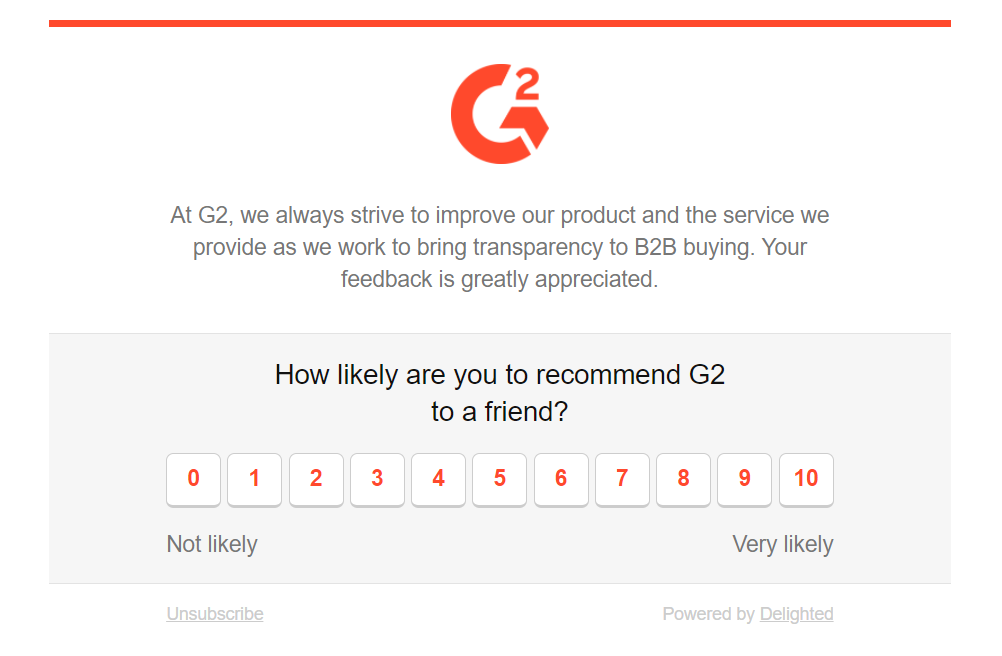
After subscribers click on any number, they’re redirected to the survey and asked to explain their answer in detail.
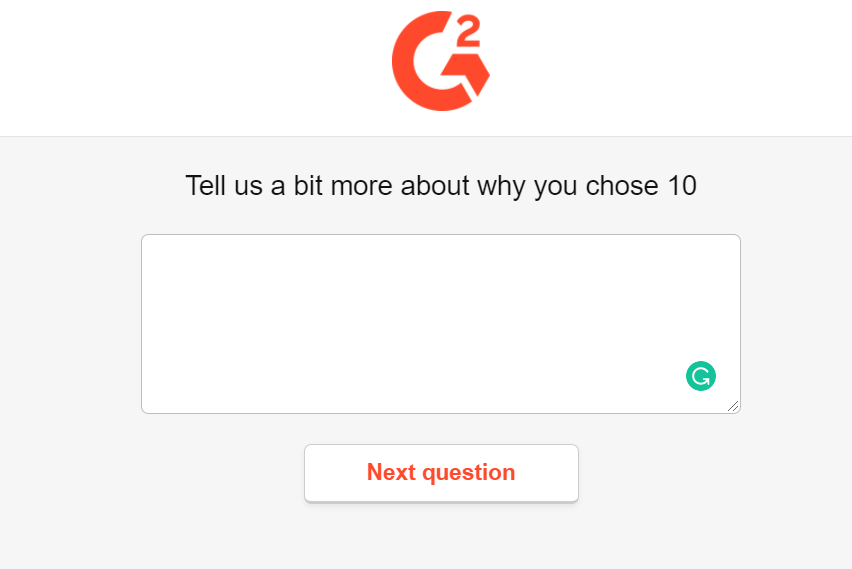
Then, the company wants to understand whether users are satisfied with its customer service.
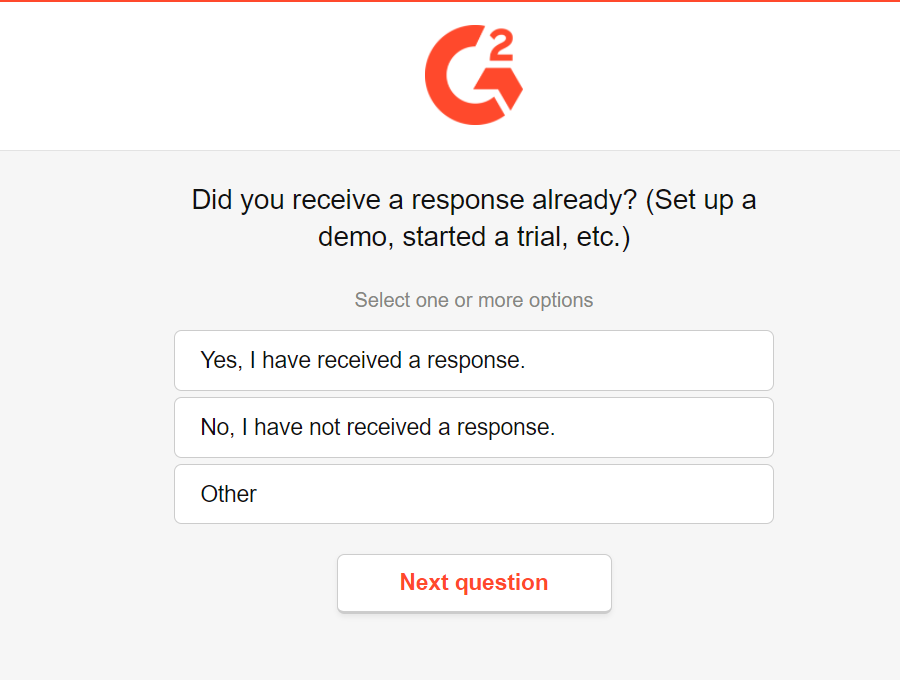
The last question is open-ended. Customers are asked how G2 can improve the process of buying software.
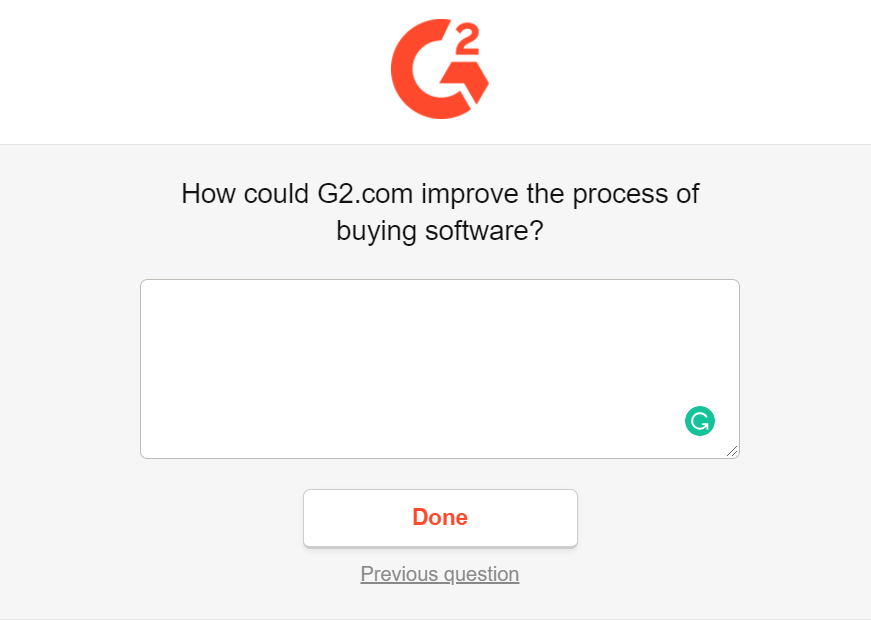
Uber app asks both drivers and passengers about their experience after each ride. This way, both can see each other’s ratings before the next ride. Such a survey takes only several seconds and is highly effective.
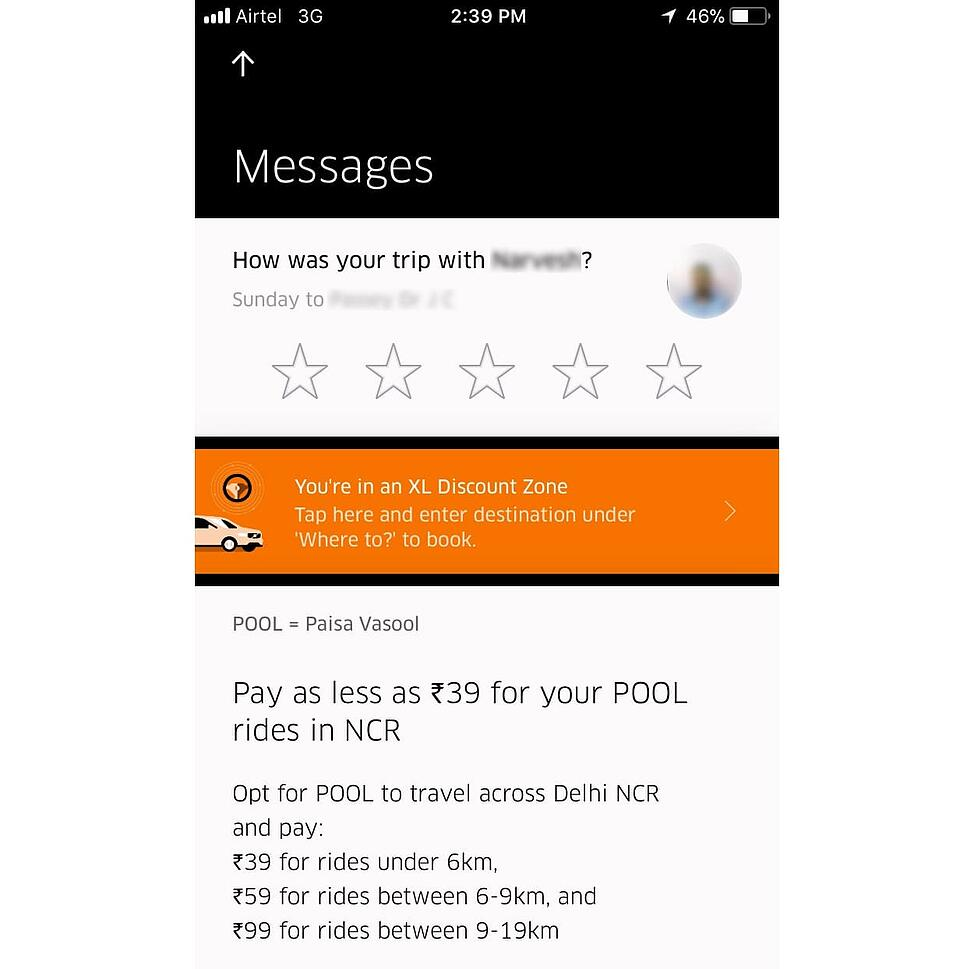
Chubbies need their customers’ opinions before designing new shorts.
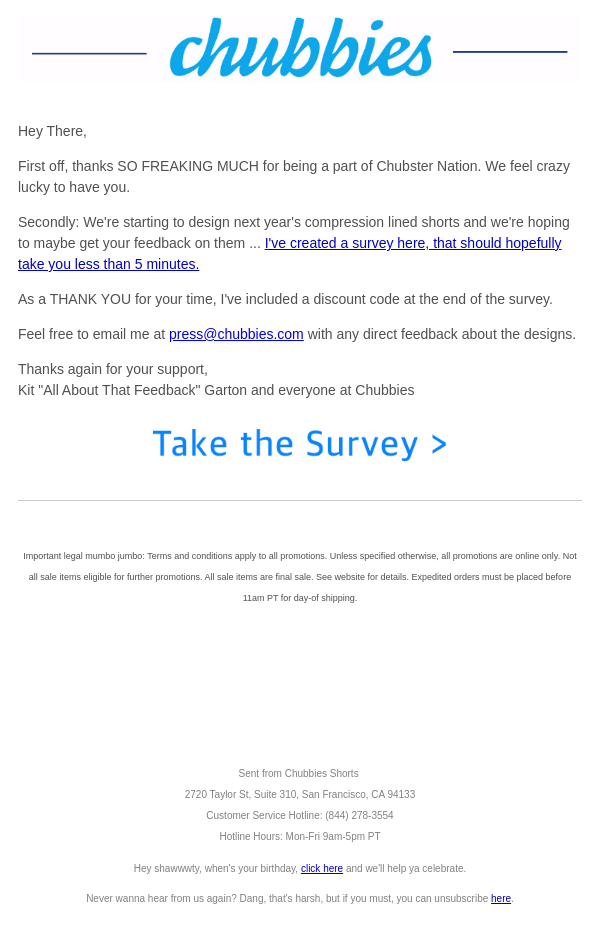
The brand also offers users a 20% discount on its products as an incentive.
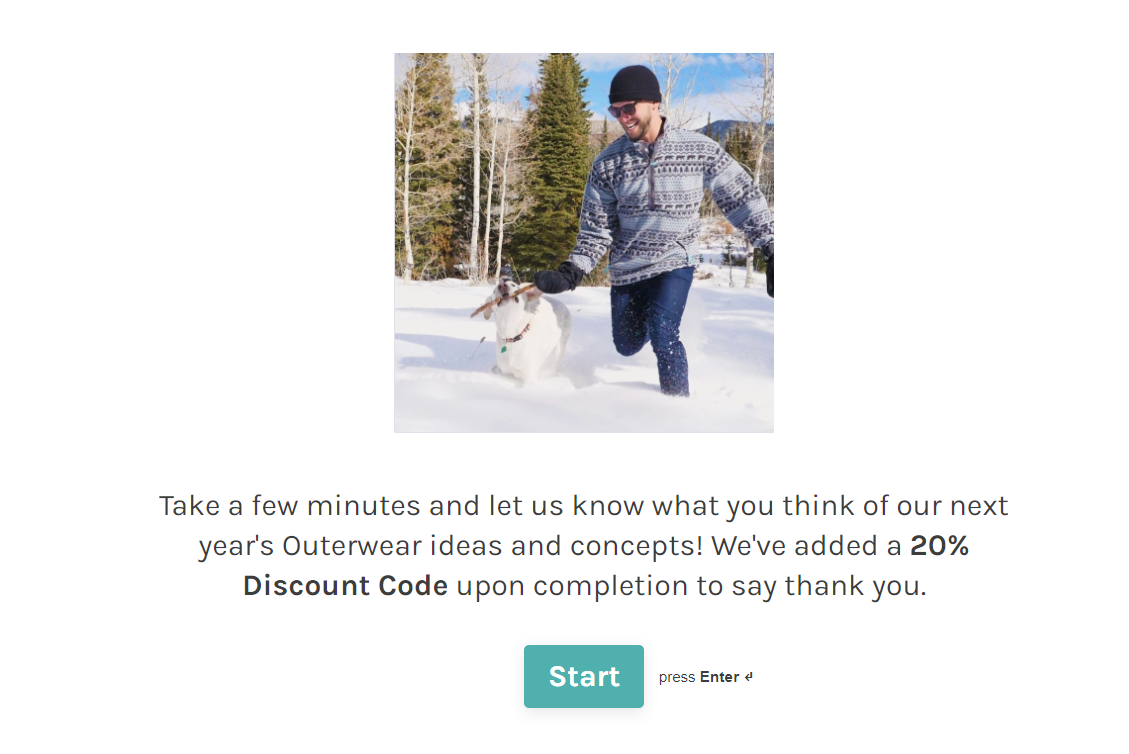
In a nutshell, there are many types of surveys and questions you can use to interview your clients effectively. Let your audience take it via email with the help of SendPulse!
Last Updated: 22.03.2023

or